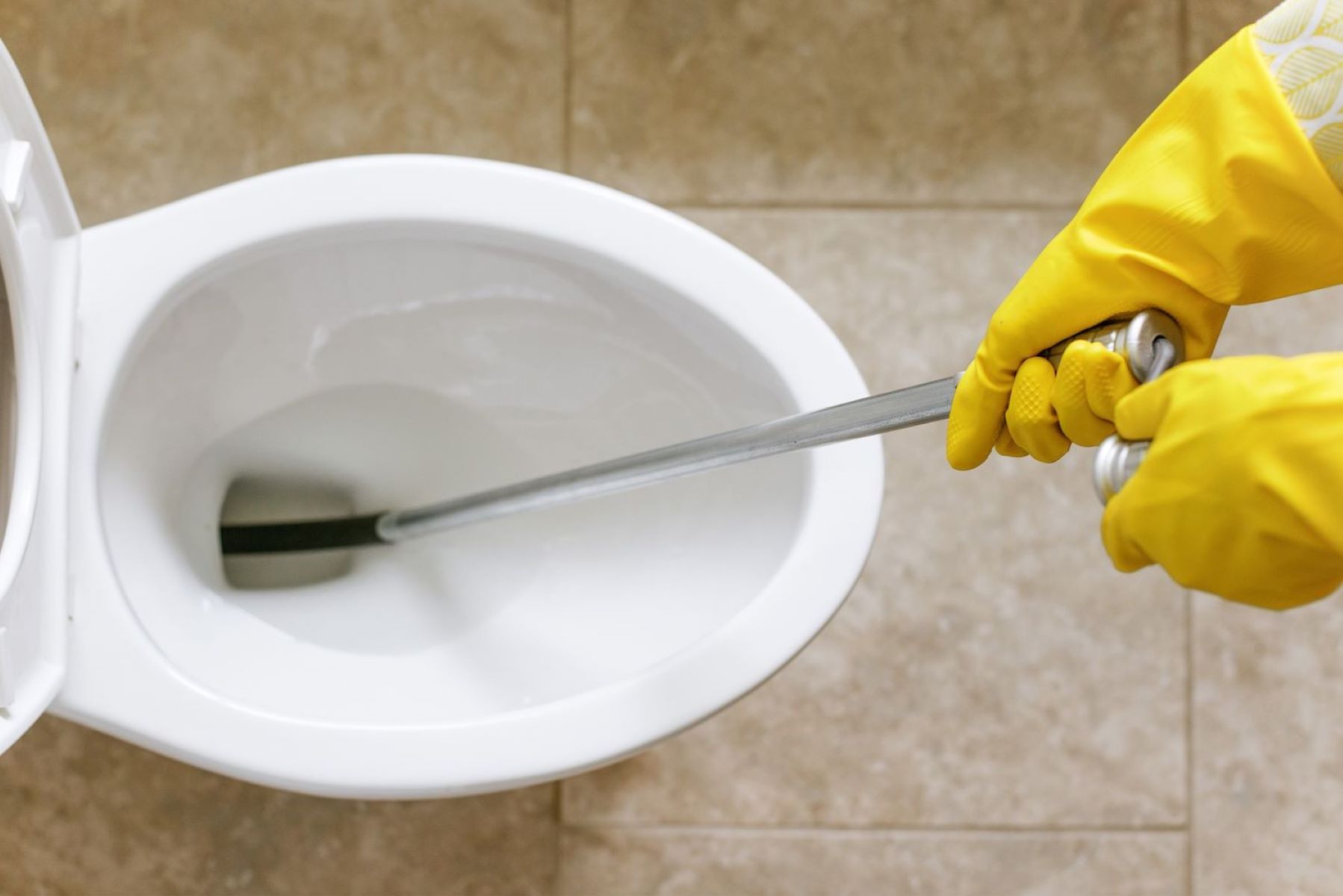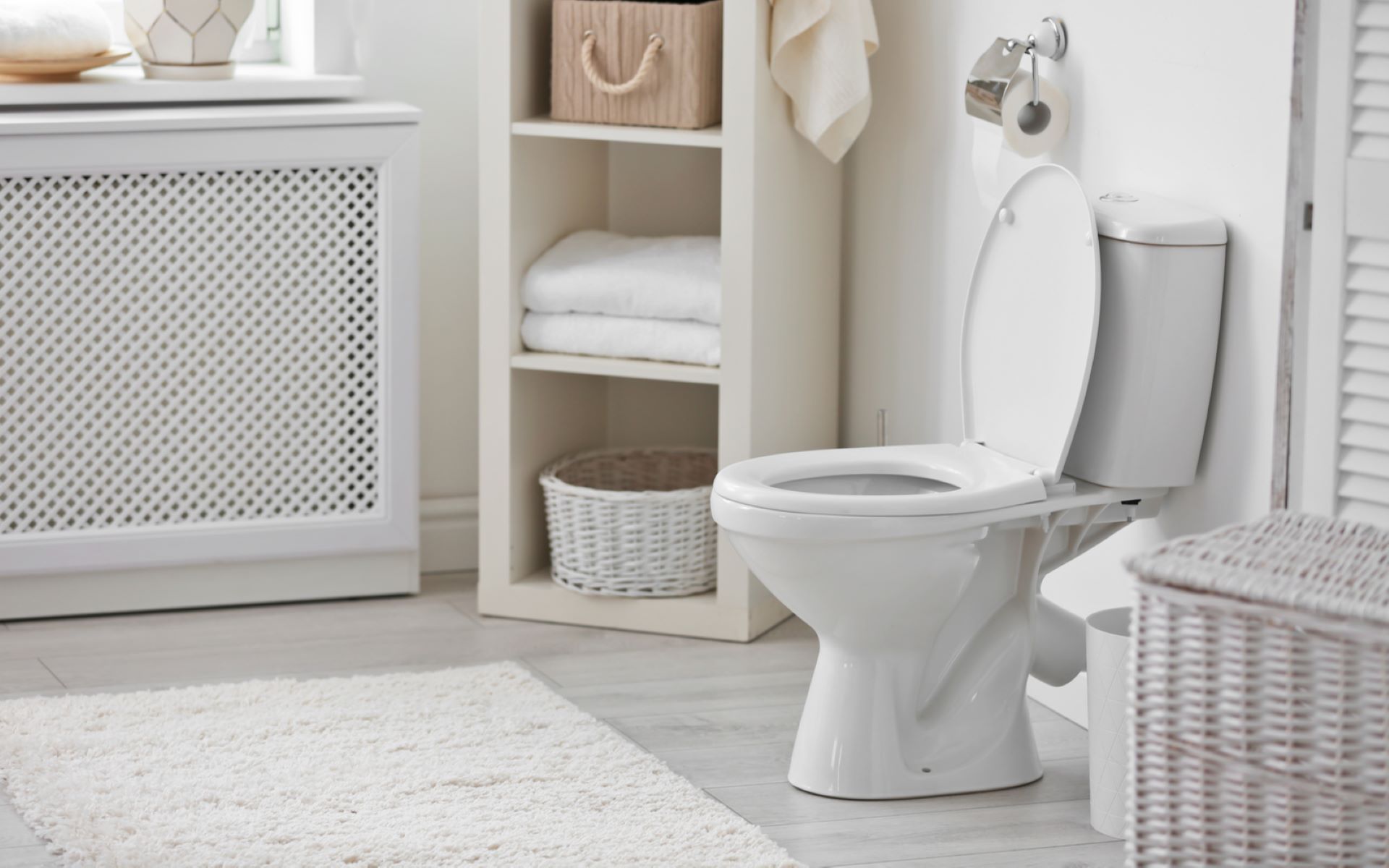Home>Home and Garden>How To Use A Toilet Auger


Home and Garden
How To Use A Toilet Auger
Published: March 5, 2024
Learn how to use a toilet auger effectively to unclog your toilet and keep your home and garden plumbing in top shape. Follow these simple steps for a quick fix!
(Many of the links in this article redirect to a specific reviewed product. Your purchase of these products through affiliate links helps to generate commission for Regretless.com, at no extra cost. Learn more)
Table of Contents
Introduction
A toilet auger is a valuable tool for addressing stubborn clogs that a plunger can't handle. It's a long, flexible rod with a coiled end designed to navigate through the twists and turns of a toilet's plumbing system. When a plunger fails to dislodge a clog, a toilet auger, also known as a closet auger, comes to the rescue. This tool is essential for homeowners and DIY enthusiasts, offering a practical solution to a common household problem.
In the following sections, we will delve into the specifics of what a toilet auger is, when to use it, and most importantly, how to use it effectively. Whether you're a seasoned DIYer or a novice homeowner, understanding the ins and outs of a toilet auger can save you from the inconvenience and expense of calling a professional plumber. So, let's roll up our sleeves and explore the world of toilet augers, empowering you to tackle toilet clogs with confidence and ease.
Read more: How To Turn Off Water To Toilet
What is a Toilet Auger?
A toilet auger, also referred to as a closet auger, is a specialized plumbing tool designed to tackle stubborn toilet clogs. It consists of a long, flexible rod, typically made of durable materials such as steel or plastic, with a handle on one end and a coiled or J-shaped auger bit on the other. The auger bit is specifically crafted to navigate the twists and turns of a toilet's plumbing system, allowing it to reach and dislodge clogs that are beyond the reach of a standard plunger.
The design of a toilet auger is tailored to the unique structure of a toilet's drainage system. Unlike a standard drain snake, which is used for clearing clogs in larger pipes, a toilet auger is specifically engineered to maneuver through the curved trap and narrow drain of a toilet without causing damage to the porcelain bowl. This makes it a safe and effective tool for addressing clogs that are resistant to plunging.
The handle of a toilet auger provides the user with a firm grip and control over the tool, allowing for precise manipulation during use. The auger bit, with its coiled or J-shaped end, is adept at grabbing and breaking apart obstructions within the toilet's plumbing, whether they are caused by excessive toilet paper, hygiene products, or other foreign objects.
In essence, a toilet auger is a fundamental instrument for any homeowner or DIY enthusiast, offering a practical and efficient solution to the common inconvenience of a clogged toilet. With its specialized design and functionality, a toilet auger serves as a reliable ally in maintaining the smooth operation of one of the most essential fixtures in any household.
When to Use a Toilet Auger
A toilet auger becomes necessary when a stubborn clog resists the efforts of a plunger. Despite the effectiveness of plungers in addressing minor toilet clogs, there are instances when a more tenacious obstruction requires the intervention of a toilet auger. Understanding when to use a toilet auger is crucial for homeowners, as it can prevent the frustration and inconvenience of dealing with a persistently clogged toilet.
One of the primary indicators for using a toilet auger is when repeated attempts with a plunger fail to dislodge the clog. If plunging the toilet vigorously and employing various techniques such as the "flush and plunge" method or using a flange plunger do not yield results, it's a clear sign that a toilet auger is needed. The auger's specialized design allows it to navigate through the toilet's trap and drain, reaching and breaking apart obstructions that are beyond the reach of a plunger.
Additionally, if the water level in the toilet bowl remains consistently high after multiple attempts to plunge, it indicates a more severe clog that requires the use of a toilet auger. This persistent high water level is often a result of an obstruction that cannot be dislodged by plunging alone, necessitating the use of a toilet auger to effectively clear the blockage.
Another scenario that calls for the use of a toilet auger is when there is a noticeable gurgling sound coming from the toilet after flushing. This gurgling indicates that there is a partial blockage in the drain, causing air to be trapped and released as the water attempts to pass through the clog. In such cases, using a toilet auger can effectively remove the obstruction, restoring the smooth flow of water and eliminating the gurgling sound.
Furthermore, if there is a history of recurring clogs in the same toilet, it may be an indication of an underlying issue within the plumbing system. In such instances, using a toilet auger to thoroughly clear the drain can help address the root cause of the persistent clogs, preventing future blockages and ensuring the proper functioning of the toilet.
In summary, a toilet auger should be used when standard plunging methods fail to clear a stubborn clog, when the water level in the toilet bowl remains consistently high, when gurgling sounds are present after flushing, and when recurring clogs occur in the same toilet. By recognizing these signs, homeowners can effectively utilize a toilet auger to address challenging toilet clogs and restore the proper functionality of their plumbing system.
How to Use a Toilet Auger
Using a toilet auger may seem daunting at first, but with the right technique and approach, it can be a straightforward and effective solution for stubborn toilet clogs. Here's a step-by-step guide on how to use a toilet auger properly:
-
Prepare the Area: Before using a toilet auger, ensure that the immediate area around the toilet is clear and accessible. Remove any objects or obstacles that may obstruct your movement as you work with the auger.
-
Position the Auger: Carefully insert the coiled end of the auger into the toilet bowl, ensuring that it enters the drain opening without causing any damage to the porcelain surface. The protective coating on the auger's end helps prevent scratches or marks inside the toilet bowl.
-
Navigate the Drain: Once the auger is positioned in the drain, gently rotate the handle in a clockwise direction while applying slight pressure. This rotational movement allows the auger to navigate through the twists and turns of the toilet's plumbing, gradually advancing toward the obstruction.
-
Engage the Obstruction: As you rotate the auger, you will feel resistance when it encounters the clog. Continue to rotate the handle while maintaining steady pressure, allowing the coiled end of the auger to engage and break apart the obstruction.
-
Retract the Auger: After successfully breaking apart the clog, carefully retract the auger from the drain by rotating the handle in the opposite direction. Exercise caution to avoid splashing or dislodging any debris that may have been loosened during the process.
-
Flush and Test: Once the auger is removed, flush the toilet to clear any remaining debris and verify that the water flows smoothly without any signs of a clog. If necessary, repeat the process to ensure that the drain is completely clear.
-
Clean and Store: After using the toilet auger, thoroughly clean the tool to remove any residue or debris. Properly store the auger in a designated area, ensuring that it is easily accessible for future use.
By following these steps, you can effectively use a toilet auger to address stubborn clogs and restore the proper function of your toilet. With patience and precision, the toilet auger proves to be a valuable tool in maintaining a smoothly running plumbing system within your home.
Tips for Using a Toilet Auger
-
Protective Gear: When using a toilet auger, it's advisable to wear protective gloves to shield your hands from any potential debris or residue that may be encountered during the process. Additionally, wearing safety goggles can provide added protection, especially when dealing with persistent clogs that may release splashes of water or dislodged materials.
-
Patience and Persistence: Using a toilet auger requires patience, particularly when navigating through the twists and turns of the toilet's plumbing. It's essential to apply steady and consistent pressure while rotating the auger, allowing it to gradually engage and break apart the obstruction. Persistence is key, especially when dealing with stubborn clogs, as it may take several attempts to completely clear the drain.
-
Avoid Excessive Force: While it's important to apply steady pressure when using a toilet auger, it's equally crucial to avoid using excessive force that could potentially damage the toilet's porcelain surface or the plumbing system. Gentle and controlled movements are more effective in navigating through the drain and engaging the clog without causing unintended harm.
-
Thorough Cleaning: After using the toilet auger, thoroughly clean the tool to remove any residual debris or waste materials. Proper cleaning not only maintains the effectiveness of the auger but also ensures hygienic practices, preventing the spread of bacteria or unpleasant odors.
-
Regular Maintenance: Incorporating the use of a toilet auger into your regular plumbing maintenance routine can help prevent severe clogs from developing. By periodically clearing the drain with a toilet auger, you can address minor obstructions before they escalate into more challenging clogs, promoting the smooth operation of your toilet.
-
Proper Storage: When not in use, store the toilet auger in a designated area, ensuring that it is easily accessible when needed. Proper storage not only prolongs the lifespan of the tool but also minimizes the risk of accidental damage or misplacement.
-
Seek Professional Assistance if Needed: In cases where the clog persists despite using a toilet auger, or if there are underlying issues within the plumbing system, it's advisable to seek professional assistance from a licensed plumber. Professional expertise can help diagnose and address complex plumbing issues, ensuring the long-term functionality of your toilet and overall plumbing system.
By incorporating these tips into your approach to using a toilet auger, you can effectively address stubborn clogs while maintaining the integrity of your toilet and plumbing system. With the right techniques and precautions, the toilet auger proves to be a valuable tool in the arsenal of any homeowner or DIY enthusiast.
Read more: How To Use The Emergency Brake
Conclusion
In conclusion, a toilet auger is an indispensable tool for addressing challenging toilet clogs that resist conventional plunging methods. Its specialized design, featuring a long, flexible rod with a coiled or J-shaped auger bit, enables it to navigate through the intricate plumbing of a toilet, effectively dislodging obstructions that cause persistent clogs. By recognizing the signs that warrant the use of a toilet auger and understanding the proper technique for its use, homeowners can confidently tackle stubborn clogs and maintain the smooth operation of their plumbing system.
The versatility and effectiveness of a toilet auger make it a valuable addition to any homeowner's toolkit. When standard plunging methods prove ineffective, the toilet auger steps in as a reliable solution, offering a practical and efficient means of clearing challenging clogs. Its ability to reach and engage obstructions within the toilet's drain, without causing damage to the porcelain bowl, sets it apart as a specialized tool tailored to the unique requirements of toilet maintenance.
Furthermore, the tips for using a toilet auger, including the importance of protective gear, patience, and persistence, underscore the significance of employing the tool with care and precision. By incorporating these tips into the process, homeowners can maximize the effectiveness of the toilet auger while ensuring their safety and the integrity of their plumbing system.
Ultimately, the use of a toilet auger empowers homeowners to take proactive measures in addressing toilet clogs, preventing the inconvenience and expense of relying solely on professional plumbing services. With the proper knowledge and tools at their disposal, homeowners can confidently manage common plumbing issues, promoting the efficient and trouble-free operation of their household fixtures.
In essence, the toilet auger stands as a testament to the practicality and effectiveness of specialized tools in addressing everyday challenges within the home. By understanding its purpose, recognizing the signs that call for its use, and employing the proper technique and precautions, homeowners can navigate the realm of plumbing maintenance with confidence and ease, ensuring the smooth functioning of their essential fixtures.














